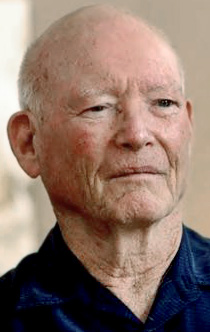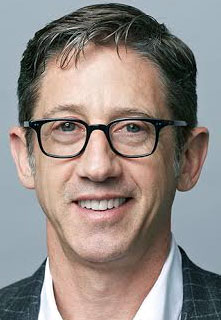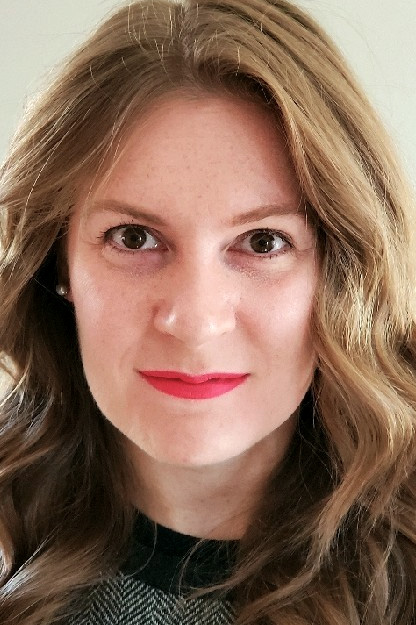

 Over the past twenty years of my engagement in the ICANN multistakeholder process, one topic that has always been near and dear to me has been improving the accuracy and access to domain name registration data in a way that respects the legal rights of both registrants and requestors of registration data. Sadly, the glacial pace at which ICANN develops and implements policy has prevented a holistic solution to the problem. more
Over the past twenty years of my engagement in the ICANN multistakeholder process, one topic that has always been near and dear to me has been improving the accuracy and access to domain name registration data in a way that respects the legal rights of both registrants and requestors of registration data. Sadly, the glacial pace at which ICANN develops and implements policy has prevented a holistic solution to the problem. more
TLD registrations in the Internet's root-zone file currently are divided into two broad classifications: generic and country-code top-level domains. With respect to the latter classification, no new "strategy" is required to add further ccTLDs as a relatively well-working process is already in place to integrate the occasional new country-code top-level domain. With one of these two classifications under reasonably sound management, it is therefore perfectly understandable to see that the ICANN organization consequently views its obligation to "Define and implement a predictable strategy for selecting new TLDs" as a mandate "to begin the process of allocating and implementing new gTLDs"... the flaw in this conclusion, however, stems from the presumption that the Internet's taxonomy must necessarily contain only the two above-so-mentioned broad classifications. I am proposing a third TLD classification -- based on languages. more
 On January 17th in the closing days of the Biden Administration, NTIA issued the following Response for Information in connection with the .us ccTLD. While responses to the RFI will be held in confidence by NTIA per the RFI, some organizations such as M3AAWG made their response public. In the spirit of openness and transparency, Rick Lane and I are sharing our response on this important topic. more
On January 17th in the closing days of the Biden Administration, NTIA issued the following Response for Information in connection with the .us ccTLD. While responses to the RFI will be held in confidence by NTIA per the RFI, some organizations such as M3AAWG made their response public. In the spirit of openness and transparency, Rick Lane and I are sharing our response on this important topic. more
 By now anyone who's part of the domain investment or broader ICANN community is aware of the curious saga of the recently launched .XYZ registry. Soon after its young CEO boldly stated, "we hope to reach 1 million .XYZ registrations in the first year and 5 million registrations in the first three years", the registry launched with a remarkable total of nearly 18,000 registrations on its first day, a total that has quickly grown to more than 100,000. But it was soon noted that "the zone files showed that over 70% of all .XYZ registrations had been made at NetworkSolutions... more
By now anyone who's part of the domain investment or broader ICANN community is aware of the curious saga of the recently launched .XYZ registry. Soon after its young CEO boldly stated, "we hope to reach 1 million .XYZ registrations in the first year and 5 million registrations in the first three years", the registry launched with a remarkable total of nearly 18,000 registrations on its first day, a total that has quickly grown to more than 100,000. But it was soon noted that "the zone files showed that over 70% of all .XYZ registrations had been made at NetworkSolutions... more
CENTR, the association which represents European country code top-level domain name registries (ccTLDs), such as .de for Germany or .no for Norway, has published the latest edition of its quarterly CENTRstats TLD Market Report, covering the global status and registration trends in all top-level domains (legacy gTLDs, new gTLDs and ccTLDs), with a specific focus on the European ccTLD market. more
 A recent survey conducted by the Neustar International Security Council confirmed the heightened interests on domain name system (DNS) security. The survey reveals that over three-quarters of cybersecurity professionals anticipate increases in DNS attacks, especially with more people shopping online amid the pandemic. Yet, close to 30% have reservations about their ability to respond to these attacks. more
A recent survey conducted by the Neustar International Security Council confirmed the heightened interests on domain name system (DNS) security. The survey reveals that over three-quarters of cybersecurity professionals anticipate increases in DNS attacks, especially with more people shopping online amid the pandemic. Yet, close to 30% have reservations about their ability to respond to these attacks. more
 ICANN Board Chair Vint Cerf now works for a company whose motto is, "Do No Evil." So how could Vint and his fellow board members be engaged in a massive capitulation to the enterprise greed of dot-com operator VeriSign? The story of how the Internet community got to its current impasse over the future of the ICANN-VeriSign relationship is overly complicated but the bottom line is that we are suffering from woes created by the U.S. Government with the best of intentions over the past fifteen years. And only the government has the capacity to stop equivocating and do the right thing for all of us. The road to hell is paved with good intentions... more
ICANN Board Chair Vint Cerf now works for a company whose motto is, "Do No Evil." So how could Vint and his fellow board members be engaged in a massive capitulation to the enterprise greed of dot-com operator VeriSign? The story of how the Internet community got to its current impasse over the future of the ICANN-VeriSign relationship is overly complicated but the bottom line is that we are suffering from woes created by the U.S. Government with the best of intentions over the past fifteen years. And only the government has the capacity to stop equivocating and do the right thing for all of us. The road to hell is paved with good intentions... more
 You could call this Part Three in our series on Illicit Internet Pharmacy. Part One being What's Driving Spam and Domain Fraud? Illicit Drug Traffic, Part Two being Online Drug Traffic and Registrar Policy. There are a few facts I'd like to list briefly so everyone is up to speed. The largest chunk of online abuse at this time is related to illicit international drug traffic, mostly counterfeit and diverted pharmaceuticals. more
You could call this Part Three in our series on Illicit Internet Pharmacy. Part One being What's Driving Spam and Domain Fraud? Illicit Drug Traffic, Part Two being Online Drug Traffic and Registrar Policy. There are a few facts I'd like to list briefly so everyone is up to speed. The largest chunk of online abuse at this time is related to illicit international drug traffic, mostly counterfeit and diverted pharmaceuticals. more
 When a brand goes so far as to ask a domain name registrar for Whois (the registration contact details) of a potentially abusive domain name, there's likely a lot at stake. Most often, the request is prompted by consumer safety concerns, such as the risk to consumers posed by a malicious site. Other times, the demand has a simple goal: to have a dialog with the registrant about the use of trademarks or other intellectual property in order to avoid extreme action. more
When a brand goes so far as to ask a domain name registrar for Whois (the registration contact details) of a potentially abusive domain name, there's likely a lot at stake. Most often, the request is prompted by consumer safety concerns, such as the risk to consumers posed by a malicious site. Other times, the demand has a simple goal: to have a dialog with the registrant about the use of trademarks or other intellectual property in order to avoid extreme action. more
Earlier this year we requested your questions on one of ICANN's most heated discussions -- issues involving top-level domains (TLDs) -- which we passed on to Vint Cerf, Google's VP and Chief Internet Evangelist and chairman of the board of ICANN. Despite an understandably heavy schedule, Vint Cerf has taken the time to personally respond to more questions than we had originally anticipated. So with our special thanks, here are his responses. more
 ICANN's WDPRS system has been defeated. The system is intended to remove or correct fraudulently registered domains, but it does not work anymore. Yesterday I submitted a memo to the leadership of the ICANN At-Large Advisory Committee (ALAC) and the greater At-Large community. The memo concerns the details of a 214-day saga of complaints about a single domain used for trafficking opioids. more
ICANN's WDPRS system has been defeated. The system is intended to remove or correct fraudulently registered domains, but it does not work anymore. Yesterday I submitted a memo to the leadership of the ICANN At-Large Advisory Committee (ALAC) and the greater At-Large community. The memo concerns the details of a 214-day saga of complaints about a single domain used for trafficking opioids. more
The Colombian's Ministry of ICT (MinTIC), and ccTLD Manager for the .CO ccTLD, recently announced an expedited timeline for the Request for Proposal (RFP) to operate over 3 million .CO domains for the next 10 years. The proposed 10-year term is double the current five-year term. This represents the latest in a series of recent RFPs associated with several high-profile TLDs before ICANN's planned roll-out of new gTLD early next year. more
 Lost amid the furor about ICANN's rule change that may (or may not) lead to a flood of TLDs is the uncomfortable fact that almost without exception, the new TLDs created since 2000 have been utter failures. Other than perhaps .cat and .mobi, they've missed their estimates of the number of registrations by orders of magnitude, and they haven't gotten mindshare in the target community. So what went wrong? more
Lost amid the furor about ICANN's rule change that may (or may not) lead to a flood of TLDs is the uncomfortable fact that almost without exception, the new TLDs created since 2000 have been utter failures. Other than perhaps .cat and .mobi, they've missed their estimates of the number of registrations by orders of magnitude, and they haven't gotten mindshare in the target community. So what went wrong? more
 Are you interested in helping guide the future of the Public Interest Registry (PIR), the non-profit operator of a number of domains that serve the public interest, including .ORG, .NGO and .ONG? Or do you know of someone who would be a good candidate? If so, the Internet Society is seeking nominations for three positions on the PIR Board of Directors. The nomination deadline is 14 February 2025. more
Are you interested in helping guide the future of the Public Interest Registry (PIR), the non-profit operator of a number of domains that serve the public interest, including .ORG, .NGO and .ONG? Or do you know of someone who would be a good candidate? If so, the Internet Society is seeking nominations for three positions on the PIR Board of Directors. The nomination deadline is 14 February 2025. more
 Shortly after the National Telecommunications and Information Administration (NTIA)'s recent announcement allowing Verisign to pursue increased .com registry fees, Verisign published a blog post questioning the business practices of registrars and domain name investors. The ICA, on behalf of its registrar and domain name investor members, had previously spoken out against a .com fee increase, as did others in the domain industry. more
Shortly after the National Telecommunications and Information Administration (NTIA)'s recent announcement allowing Verisign to pursue increased .com registry fees, Verisign published a blog post questioning the business practices of registrars and domain name investors. The ICA, on behalf of its registrar and domain name investor members, had previously spoken out against a .com fee increase, as did others in the domain industry. more